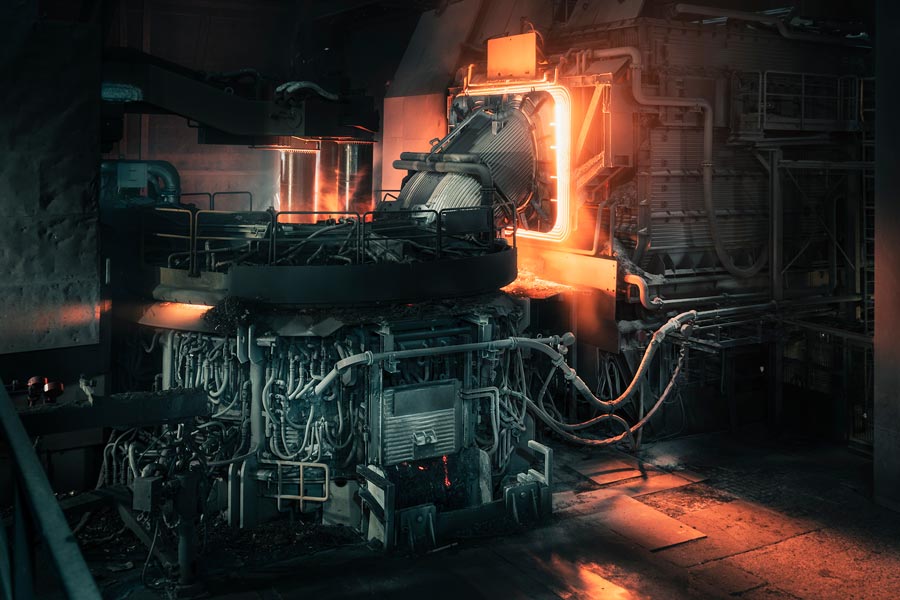How does an EAF work?
The process starts with loading the scrap metal into the EAF furnace. Once this phase is charged, three graphite electrodes are used, serving a critical role in the entire production process. An electric arc is triggered between the graphite electrodes generating a high melting power that can reach very high temperatures (up to and beyond 3,500 °C) capable of transforming steel from a solid to a liquid state. These electrodes are lowered into the furnace and the powerful electric arc generated through the electrodes converts the scrap into molten steel. Once the metal is completely liquid, it is ready for the tapping phase at a temperature of approximately 1620°C.
Steel is refined to achieve the desired quality
The tapping stage involves pouring the molten steel into a vessel referred to as a ladle. From here the steel is moved on to the next processing operations. First, it has to undergo a refining phase, where ferroalloys and other specific substances are added in order to accurately adjust the chemical composition of the new material. The chemical composition of steel is identical to the production sheet which provides us with the percentage of chemical elements (such as Carbon, Boron, Silicon, etc.) that are required in order to manufacture steel that meets the standards of each specific application.

Continuous casting shapes the steel
After the refining phase, the molten steel is transferred to a “continuous casting” machine, where it is subjected to a controlled cooling process that solidifies it, in our case taking the form of billets, which are 16 x 16 cm rectangular steel profiles approximately 12 metres in length. The billets are then moved to the rolling mills, where additional transformations and processing operations are performed.
At the Pittini Group, we produce steel for the construction and mechanical engineering sectors. Our products are manufactured from recycled ferrous materials, which are subjected to strict quality control procedures before becoming the raw material from which our steel is created.



